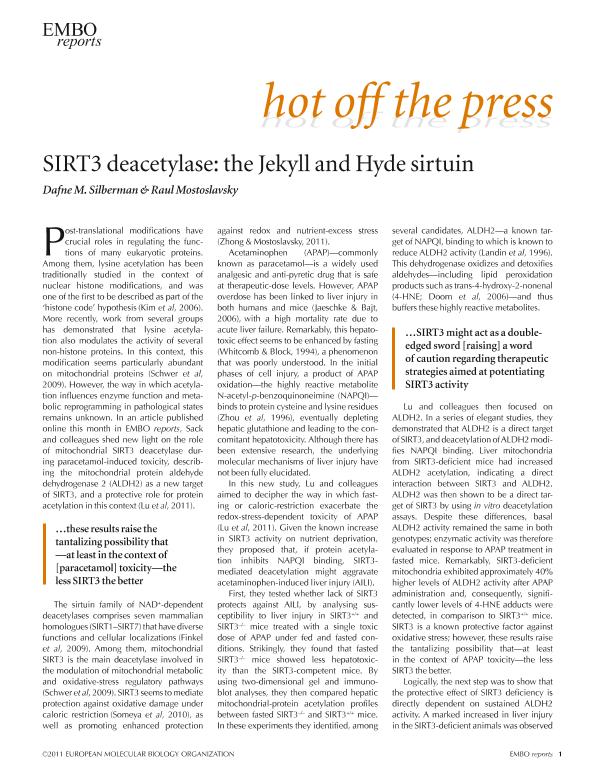Artículo
SIRT3 deacetylase: the Jekyll and Hyde sirtuin
Fecha de publicación:
08/2011
Editorial:
Embo Press
Revista:
Embo Reports
ISSN:
1469-221X
Idioma:
Inglés
Tipo de recurso:
Artículo publicado
Clasificación temática:
Resumen
Post‐translational modifications have crucial roles in regulating the functions of many eukaryotic proteins. Among them, lysine acetylation has been traditionally studied in the context of nuclear histone modifications, and was one of the first to be described as part of the ‘histone code’ hypothesis (Kim et al, 2006). More recently, work from several groups has demonstrated that lysine acetylation also modulates the activity of several non‐histone proteins. In this context, this modification seems particularly abundant on mitochondrial proteins (Schwer et al, 2009). However, the way in which acetylation influences enzyme function and metabolic reprogramming in pathological states remains unknown. In an article published online this month in EMBO reports, Sack and colleagues shed new light on the role of mitochondrial SIRT3 deacetylase during paracetamol‐induced toxicity, describing the mitochondrial protein aldehyde dehydrogenase 2 (ALDH2) as a new target of SIRT3, and a protective role for protein acetylation in this context.
Palabras clave:
Sirtuin Family
Archivos asociados
Licencia
Identificadores
Colecciones
Articulos(CEFYBO)
Articulos de CENTRO DE ESTUDIOS FARMACOLOGICOS Y BOTANICOS
Articulos de CENTRO DE ESTUDIOS FARMACOLOGICOS Y BOTANICOS
Citación
Silberman, Dafne Magali; Mostoslavsky, Raul; SIRT3 deacetylase: the Jekyll and Hyde sirtuin; Embo Press; Embo Reports; 12; 8; 8-2011; 746-747
Compartir
Altmétricas




